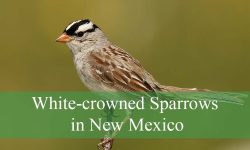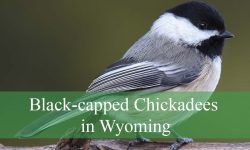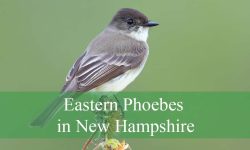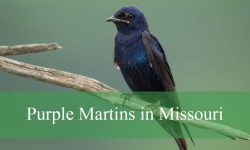Horned larks thrive across Arizona’s sprawling grasslands and desert regions, showing adaptations that make them unmistakable in open terrain. Their subtle plumage, black facial markings, and tiny feather “horns” make them instantly recognizable to anyone who spends time in the state’s open country. Although they often remain close to the ground and seem quiet at first, their lives reveal surprising behaviors and ecological roles that many people never notice.
Arizona’s expansive grasslands, desert flats, and agricultural corridors create ideal environments for horned larks. The combination of wide horizons, sparse vegetation, and strong sunlight supports their highly specialized lifestyle. They thrive in places that many other birds avoid, using a mix of stealth, agility, and remarkable endurance to survive the extremes of the desert Southwest.
This article explores hidden facts about horned larks in Arizona grasslands, uncovering their feeding habits, nesting strategies, seasonal movements, ecological importance, and interactions with other wildlife across one of the most open landscapes in North America.
Understanding Horned Larks in Arizona

What Horned Larks Really Are
Horned larks are small songbirds with pale sandy plumage, black cheek patches, and two tiny feather tufts that resemble horns—traits that distinguish them from any other bird in the region. Their colors blend seamlessly with desert soil, helping them avoid predators while foraging in open areas. Their low-profile behavior, combined with fast, fluttering flight, allows them to navigate wide, treeless expanses with efficiency.
They are one of the few songbirds that truly thrive in barren, open terrain. Rather than rely on shrubs or trees, horned larks spend most of their lives on the ground, moving between patches of soil, gravel, and sparse grass. Their songs carry long distances across the empty landscape, especially during breeding season when males perform high hovering displays above the grasslands.
Why Arizona Grasslands Provide Ideal Habitat
Arizona offers a perfect combination of open space and dry climate—conditions horned larks are uniquely adapted to use. Grasslands in the San Rafael Valley, high prairies near Flagstaff, and desert flats near Casa Grande all provide essential feeding and nesting grounds. Sparse vegetation ensures clear sightlines and reduces hiding places for predators, allowing larks to detect threats early.
The state’s warm winters allow many populations to remain year round, while its varied elevations support both resident and migratory groups. Large open agricultural fields, grazing lands, and sandy washes expand their foraging opportunities throughout the year.
Where They Occur Across the State
Horned larks are widespread in Arizona and can be found from the high plateaus of the north to the dry basins of the south. They inhabit open ranchlands, desert grasslands, roadside corridors, airport fields, and agricultural plains. Populations are especially dense in regions with minimal shrub cover, where bare ground offers abundant seeds and insects.
Hidden Behaviors Most People Never Notice
Their Ground-Dwelling Lifestyle Is Highly Specialized
Horned larks spend most of their time walking or running rather than hopping. They move in quick bursts, scanning the ground for seeds or insects. This adaptation allows them to conserve energy in hot climates and avoid drawing attention from predators in open areas where cover is limited.
Their pale coloration is not merely aesthetic—it reflects sunlight and acts as camouflage against desert soils. When threatened, horned larks freeze in place, blending almost perfectly into their surroundings.
Their Singing Displays Occur High Above Grasslands
One of the most surprising behaviors of horned larks is their aerial singing display. Males rise vertically into the air, sometimes reaching dozens of meters above the ground, and hover while singing for extended periods. These displays advertise territory and attract mates, creating a melodic layer above Arizona’s otherwise quiet open plains.
In early mornings, their songs drift across the landscape during still air, providing one of the defining soundscapes of Arizona’s grasslands.
They Form Large Winter Flocks
Outside the breeding season, horned larks gather in flocks that can number in the hundreds. These groups often mix with longspurs or pipits, forming loose winter feeding associations across agricultural fields. Flocking reduces the risk of predation and increases foraging efficiency during Arizona’s cooler months.
Anatomy Built for Desert and Grassland Life
Camouflaged Plumage
Horned larks possess plumage that blends almost perfectly with the earthy tones of Arizona’s soils. Their feathers range from pale sandy brown to soft gray, allowing them to disappear into open ground when they crouch low.
This camouflage is so effective that horned larks often remain completely unnoticed until they suddenly burst into flight.
The subtle contrast on their faces and “horn” tufts provides just enough distinction for identification without compromising their ability to stay concealed in sparse grasslands or desert flats.
Long Wings for Endurance Flight
Their wings are long, narrow, and shaped for endurance, enabling horned larks to cover large distances across open landscapes without expending excessive energy.
These wings support fast, low-level flight that helps birds escape predators quickly in environments lacking shelter.
During the breeding season, males rely on these wings for lengthy, hovering song displays. They rise vertically into the air, fluttering in place while delivering high, ringing songs that travel across the grasslands.
Bills Designed for Seeds and Insects
Horned larks have slender, pointed bills that work efficiently for two feeding styles: precision seed-picking and insect-catching.
The narrow tip allows them to extract seeds lodged between pebbles, soil cracks, and dry plant stems—places many other birds cannot reach.
During warm months, the same bill becomes a versatile tool for capturing beetles, ants, grasshoppers, and other small invertebrates essential for chick development.
Feeding Habits Across Arizona Grasslands
Diet of Seeds and Small Insects
Horned larks feed heavily on seeds from grasses, annual herbs, and low-growing plants. These seeds sustain them through dry seasons when insect availability is limited.
In spring and summer, their diet shifts toward insects. Beetles, ants, and grasshoppers provide vital protein for both adult birds and growing chicks.
This combination of seeds and insects gives horned larks nutritional flexibility, allowing them to survive Arizona’s extreme seasonal variations.
Foraging on Bare Ground
Unlike many songbirds that forage in vegetation, horned larks prefer bare soil and open ground.
Desert winds often accumulate seeds in small depressions or low areas, and horned larks walk steadily across these spots, scanning for food visually rather than by probing vegetation.
Their ground-level foraging reduces competition and aligns perfectly with their camouflage and behavior.
Use of Agricultural Fields
Agricultural fields—especially plowed soil, harvested stubble, and pasturelands—provide rich feeding zones. Waste grain left from harvesting supplies abundant seeds in winter.
Disturbed soil attracts insects, offering additional food sources during warmer months.
These human-altered landscapes often support some of Arizona’s largest winter flocks.
Nesting and Breeding Behavior
Nesting on the Ground
Horned larks build nests directly on open ground, using shallow depressions that provide minimal elevation but maximum camouflage.
Females line these depressions with fine grasses, root fibers, and soft plant down. They often situate nests near small clumps of vegetation or rocks to break up their silhouette.
Ground nesting demands exceptional stealth and vigilance because nests are exposed to predators and harsh weather.
Raising Chicks in Harsh Conditions
Chicks hatch with remarkable resilience. They grow quickly to cope with hot temperatures and limited shelter typical of Arizona’s open landscapes.
Parents focus heavily on insects during early growth stages, bringing back protein-rich prey to accelerate development.
As chicks become more mobile, they transition to seeds and small ground-dwelling insects, mirroring the adult diet.
Multiple Broods
Arizona’s warm climate allows horned larks to attempt two or more broods each year.
Grassland regions influenced by monsoon rainfall see especially high productivity, as summer moisture triggers insect surges that support chick rearing.
This reproductive flexibility helps maintain strong populations across the state.
Horned Larks Across Arizona Landscapes
High Desert Grasslands
The San Rafael Valley, Sonoita grasslands, and similar high-elevation areas support some of Arizona’s most consistent horned lark populations.
These regions provide vast, treeless expanses where birds can forage freely and perform aerial displays without obstruction.
Plateau and Prairie Regions
Northern Arizona’s volcanic plateaus and prairies around Flagstaff and the Kaibab Plateau offer cooler summer breeding habitat.
Both resident and migratory birds use these regions, resulting in diverse flocks during transitional seasons.
Agricultural Corridors
Large crop fields, ranchlands, and grazing areas create productive feeding zones year round.
These landscapes mimic natural grasslands in structure, making them ideal for winter flocks that rely on waste grain and disturbed soil.
Roadside and Utility Corridors
Horned larks frequently appear along highways, airports, and utility corridors where vegetation remains short due to mowing or maintenance.
These open strips resemble natural grasslands and provide safe foraging areas with excellent visibility.
Seasonal Rhythms in Arizona
Winter
Mild winter conditions allow horned larks to remain active all day. Large flocks gather in agricultural fields, roadside flats, and high desert areas where seeds are abundant.
Spring
Spring brings courtship season. Males rise into the sky and hover while singing, filling open spaces with far-carrying musical displays.
Females inspect ground-level nesting sites as vegetation begins to green.
Summer
Breeding peaks during hot summer months. Monsoon rains boost insect populations, increasing chick survival.
During heat waves, adults adjust activity patterns, foraging at dawn and dusk.
Autumn
As temperatures cool, flocks reorganize and shift toward lower elevations or agricultural areas.
These movements set the stage for winter flock formation.
Interaction With Other Wildlife
Birds
Horned larks share habitat with meadowlarks, various sparrows, longspurs, and pipits.
Because each species targets different foods or feeding levels, direct competition remains minimal.
Winter flocks benefit from collective vigilance, allowing birds to detect predators across the wide, open land.
Mammals
Coyotes, foxes, and small mammals occasionally disrupt feeding areas.
Horned larks rely on rapid takeoffs and ground-level awareness to avoid threats. Their survival strategy depends heavily on early detection.
Even non-predatory mammals can stir insects or expose seeds, inadvertently creating feeding opportunities.
Insects
Horned larks help regulate insect populations, especially during breeding season when they require large quantities of protein for chicks.
Their diet influences local grassland food webs by reducing beetle and grasshopper numbers.
Myths and Misconceptions
Myth: Horned Larks Always Live in Cold Habitats
Although many northern populations breed in tundra or alpine environments, horned larks thrive in Arizona’s hot grasslands thanks to their behavioral and anatomical adaptations.
Myth: They Are Rare in Arizona
Horned larks are abundant and widespread throughout the state, especially in open areas with minimal shrub cover.
Myth: Their “Horns” Are True Horns
Their “horns” are feather tufts, not keratin structures. These tufts raise when the bird is alert or displaying.
Ecological Importance
Seed Regulation
Horned larks consume large quantities of grass and annual plant seeds.
Their feeding helps prevent overgrowth of annual weeds and contributes to long-term vegetation balance.
Pest Control
During nesting season, horned larks rely heavily on insects. Their consumption of beetles, ants, and grasshoppers reduces pest activity in grasslands and agricultural areas.
Grassland Health Indicators
Healthy horned lark populations signal intact open landscapes with limited shrub encroachment.
Their presence often reflects strong habitat quality and proper grassland management.
FAQs About Horned Larks in Arizona
Where can I find horned larks in Arizona?
They are common in grasslands, prairies, desert flats, and agricultural fields statewide.
What do they eat?
Seeds and small insects, depending on season.
Are they year-round residents?
Many remain in Arizona year round, while others migrate seasonally.
Why do males hover while singing?
These aerial displays mark territory and attract mates.
Do they nest in trees?
No. Horned larks nest exclusively on the ground.
Are they easy to spot?
Their camouflage makes them hard to see until they move or take flight.
Conclusion
Horned larks in Arizona grasslands reveal far more depth and adaptability than their quiet presence suggests. Their ground-dwelling lifestyle, open-country displays, seasonal resilience, and ecological contributions make them a defining species of the state’s grasslands. By understanding their behavior and habitat needs, we gain insight into the health and complexity of Arizona’s open landscapes.






